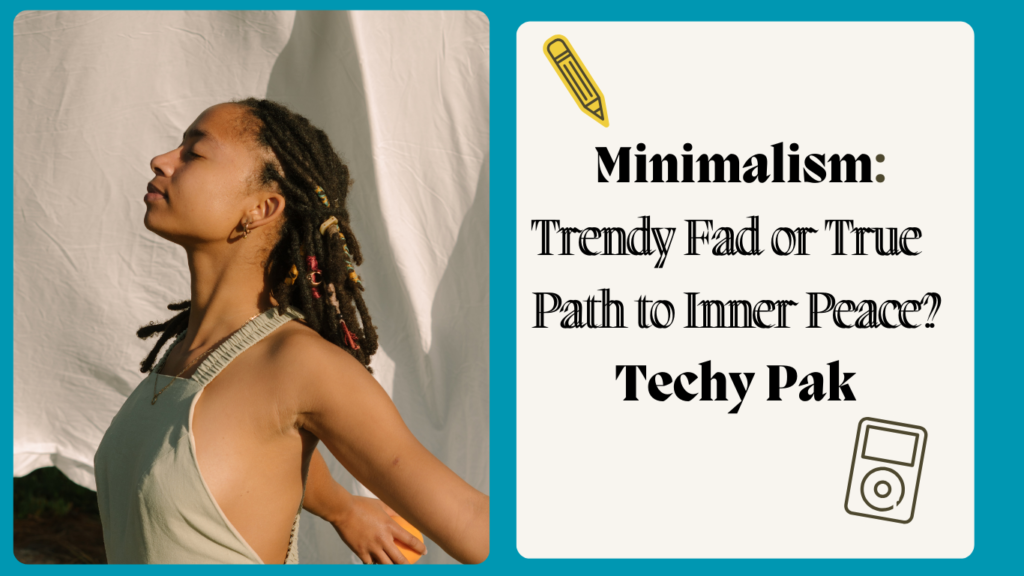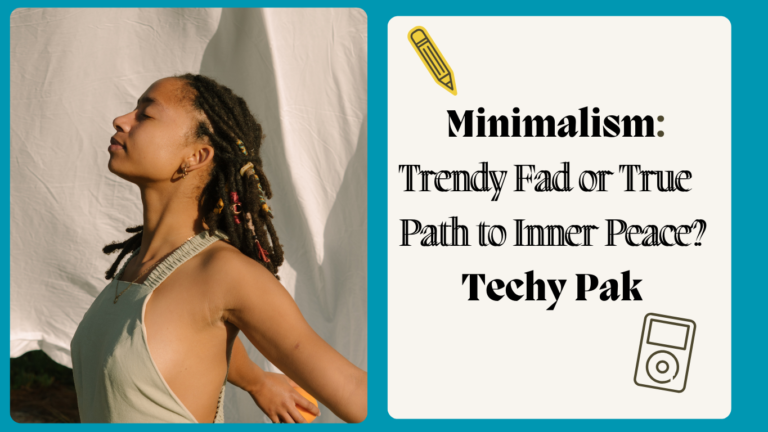Minimalism: Trendy Fad or True Path to Inner Peace?
Minimalism: Trendy Fad or True Path to Inner Peace?
Minimalism: Trendy Fad or True Path to Inner Peace?: In a world bursting at the seams with consumerism and endless distractions, minimalism has emerged as a beacon of clarity. But is it merely a trendy fad, or does it offer a genuine path to inner peace? The truth lies deeper than the Instagrammable white walls and neatly folded wardrobes. Minimalism, at its core, is not just a lifestyle but a transformative mindset—one that challenges us to reevaluate our priorities and create space for what truly matters.
The Rise of Minimalism: A Reaction to Modern Excess
It’s a countercultural response to the overwhelming abundance of modern life. For decades, we’ve been told that more is better—more possessions, more success, more commitments. Yet, as our homes and schedules become overcrowded, many are beginning to feel the emotional and psychological toll of this excess.
Minimalism invites us to strip away the unnecessary and focus on the essentials. But this rise in popularity has also led to skepticism. Is minimalism just another fleeting trend? To understand its true essence, we must separate myths from facts.
Visit : Techy Pak
Myths vs. Facts About Minimalism
Myth #1: Minimalism Means Owning Barely Anything
One of the most pervasive misconceptions about minimalism is that it requires you to live like a monk, owning only the bare minimum. Images of sparsely furnished homes and capsule wardrobes perpetuate this idea, but minimalism is not about deprivation. Instead, it’s about intentionality—owning and doing things that add value to your life.
Fact: Minimalism looks different for everyone. For some, it might mean decluttering their closets; for others, it could mean reducing digital distractions or reevaluating relationships. The key is to identify what’s truly important and let go of the rest.
Minimalism: Trendy Fad or True Path to Inner Peace?
Myth #2
Another criticism often leveled at minimalism is that it’s a lifestyle for the wealthy or privileged. After all, it’s easier to live with less when you can afford to buy quality over quantity or outsource certain tasks.
Fact: While it’s true that financial stability can make minimalism more accessible, the principles of minimalism can be applied regardless of income. It’s about making thoughtful choices with the resources you have, whether that means decluttering a single drawer or rethinking how you spend your time.
Myth #3: Minimalism Is All About Aesthetics
The minimalist aesthetic—think monochromatic palettes and clean lines—has become synonymous with the movement. This focus on appearances has led some to dismiss minimalism as superficial.
Fact: While the aesthetic appeal can be a byproduct, minimalism is fundamentally about substance, not style. A clutter-free home may look pleasing, but the real benefits come from the mental clarity and peace it fosters.
The Benefits of Minimalism: Why It’s More Than a Fad
Minimalism encourages you to say no to unnecessary commitments, allowing you to focus on your goals and passions.
1. Financial Freedom
Minimalism promotes mindful consumption, which can lead to significant savings.
2. Stronger Relationships
Minimalism isn’t just about physical possessions; it’s also about emotional baggage. By letting go of toxic relationships and prioritizing meaningful connections, you can cultivate deeper and more fulfilling bonds.
3. Environmental Impact
Living with less is inherently eco-friendly. By consuming fewer resources and reducing waste, minimalists contribute to a more sustainable planet.
Personal Stories of Minimalist Living
To truly understand the transformative power of minimalism, let’s look at some personal stories:
Sarah’s Journey: Finding Freedom Through Decluttering
Toys, clothes, and papers seemed to multiply overnight. After watching a documentary on minimalism, she decided to tackle the clutter. By gradually decluttering room by room, Sarah not only created a more serene environment but also discovered the joy of spending quality time with her family instead of managing their belongings.

James’ Transition: From Corporate Grind to Purposeful Living
James, a former corporate executive, was burnt out and unfulfilled. Inspired by minimalist principles, he downsized his possessions and shifted his focus to experiences over material wealth. Today, James runs a nonprofit and spends his time traveling and connecting with people, finding a deeper sense of purpose.
Emma’s Digital Detox: Reclaiming Her Time
Emma’s minimalism journey began with her digital life. She realized that hours spent scrolling through social media left her feeling drained and disconnected. By limiting her screen time and curating her digital spaces, Emma reclaimed her time and energy for hobbies and relationships.
How to Embrace Minimalism: Practical Tips
If you’re ready to explore the minimalist lifestyle, here are some actionable steps to get started:
- Start Small
Begin with a single drawer, closet, or area of your life. The momentum from small successes will motivate you to tackle larger projects.
- Ask Yourself Key Questions
Would I buy or commit to this again today?
- Adopt a One-In, One-Out Rule
This prevents clutter from creeping back in.
- Focus on Quality Over Quantity
Minimalism is as much about appreciating what you have as it is about letting go. Cultivate gratitude to shift your focus from scarcity to abundance.
Minimalism as a Mindset
At its heart, minimalism is not about rules or restrictions but about intentional living. It’s a mindset that prioritizes meaning over materialism and quality over quantity.
Final Thoughts:
Minimalism is more than a trendy fad; it’s a profound shift in how we approach life. It challenges us to confront our consumer-driven habits, redefine success, and create space for what truly matters. Whether you’re drawn to minimalism for its aesthetic appeal, its promise of simplicity, or its potential for inner peace, one thing is clear: it’s a journey worth taking.
The key is to align your choices with your values and priorities. In doing so, you’ll not only declutter your life but also uncover a richer, more meaningful existence.
So, is minimalism a trendy fad or a true path to inner peace? The answer lies within you. By embracing this mindset, you can transform not just your surroundings but also your inner world, finding clarity, contentment, and ultimately, peace.

